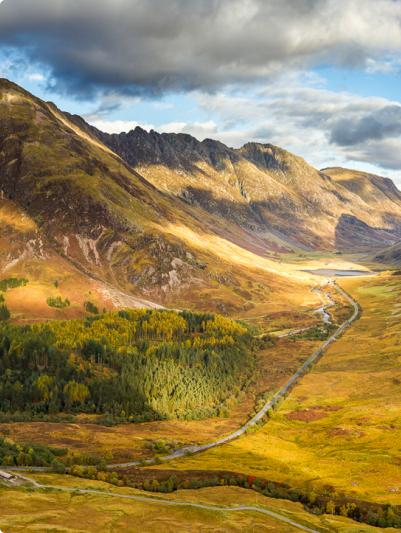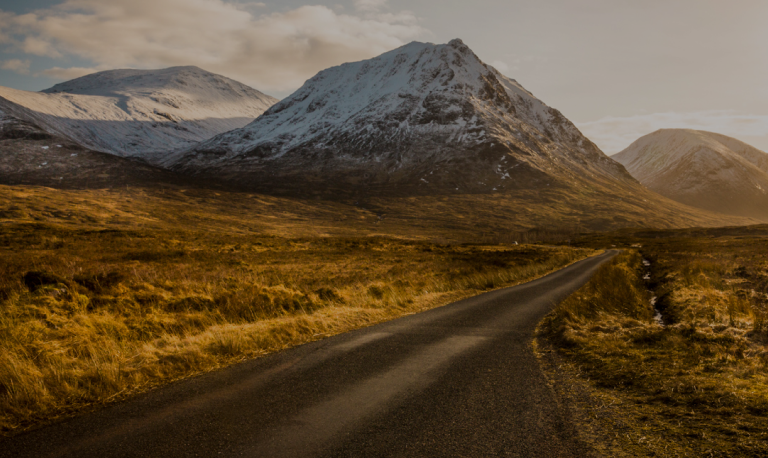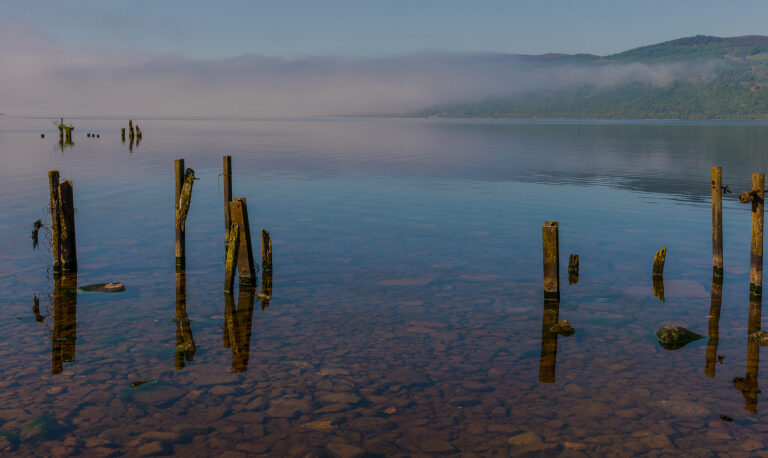Kelpies & Culture: 5 Reasons To Visit Falkirk
Easily accessible by road between Edinburgh, Glasgow or the Scottish Highlands, the rich cultural area around Falkirk in central Scotland is well worth a visit. Historically a meeting place between the Highlands and Lowlands, this region has long been a central pillar of Scottish trade.
Recently, the area has been invigorated by dynamic new structures which sit alongside its fascinating historic sites.
Here are my top 5 attractions to visit in Falkirk and its surroundings on your self-drive tour of Scotland.
The Kelpies
Dramatic metallic horses’ heads roaring up into the air, The Kelpies evoke a sense of strength and movement. Well known for causing a little wobble or two as drivers peer across to marvel from the motorway, these 30-metre tall structures rise majestically up into the air – cutting a powerful silhouette against the backdrop of the Ochil Hills.
Inspired by the mythical water-horses prominent in Scots legend, The Kelpies were constructed as guardians of the waterways, sitting at the crossroads of the Forth & Clyde and Union canals which link Edinburgh and Glasgow. They reflect the history of Scottish horse-powered agriculture and industry.
There is an excellent visitors centre where you can find out all about the creation of these equine monuments, and you can take a tour around the steel interior.
At night, the Kelpies are a special treat when their steel plates are lit up. They look especially fierce illuminated in red, as they rear their mighty metallic heads up into the night!
The Falkirk Wheel
A marvellous feat of engineering – The Falkirk Wheel is the world’s first and only rotating boat lift. The mind boggles to think of a structure capable of lifting 250 tonnes of concrete, canal and boat 30 metres into the air, but the Falkirk Wheel does just that, using nothing more than 47 pence (67 cents) worth of energy. Incredible!
For all of you physics enthusiasts out there, the Wheel works by utilising Archimedes principle of the displacement of fluids.
The Wheel consists of two gondolas which carry the boats, operating around a central pillar. When a boat enters a gondola, it displaces its own weight in water so that the weight of each gondola will always be the same. The gondolas are on opposite sides of the pillar and balance each other out. When one goes up the other comes down. Due to this pivotal relationship, it only takes a small amount of energy to turn the wheel – as much as would be required to boil 8 electric kettles, or have 2 electric showers.
You can enjoy a cup of coffee and a bite to eat while you watch the wheel at work, or hop on a cruise which will take you onto the wheel itself and a short way along the canal at the top. This leisurely chug along the aqueduct provides superb views to the Ochil Hills and, on a clear day, all across the central belt of Scotland.
Callendar House
So you’ve seen the newest attractions Falkirk has to offer, but what of its historic past?
A labyrinth of information awaits you at Callendar House, where you will find fascinating displays on the cultural evolution of Scotland and the history of the stunning mansion itself over the centuries. The house is free to visit, and the information desk at the entrance are happy to provide you with suggestions and maps if you wish to wander the grounds and take in the beautiful surrounding woodland.
The cavernous Georgian kitchen in the basement features as the Duke of Sandringham’s home in the TV series Outlander, playing host to an unforgettable scene in the ‘Vengeance is Mine’ episode.
Rich wooden panelling and a scrumptious selection of cakes entice you into the panoramic cafe. The setting oozes decadence, and they serve excellent afternoon teas – traditional scones and light lunches – to satisfy your tastebuds as you overlook the sweeping grounds.
The Roman Antonine Wall
The remains of the north west frontier of the Roman Empire sit just outside Falkirk – the best-preserved section of a mighty wall which once stretched across Scotland from Clyde to Forth.
Not to detract from the majesty of this UNESCO World Heritage Site, but the history of The Antonine Wall is mildly amusing – you can learn all about it at the interactive display in Callendar House. We’ve all heard of the spectacular Hadrian’s Wall, whose stony remnants still stretch across Britain today, but what of the emperor Antoninus Pius, Hadrian’s successor? Keen to make his mark on his newly acquired empire and demonstrate his military might, Antoninus commissioned a new wall to replace Hadrian’s Wall built only twenty years later.
A bold request, and one which I’d imagine didn’t sit too happily with the hundreds of workers who had laboured away constructing Hadrian’s (still perfectly good) Wall, just years earlier. Whatever the reasons, Antoninus’s wall was still being built 10 years after it was started, and is thought to have been eventually abandoned when Antoninus died in 161 AD.
Little remains of the Antonine Wall today but the defensive ditches. Whatever glorious wooden structures might have once guarded against the ‘barbaric north’, they, like the Emperor Antonious, have succumbed to the tides of history. Nevertheless, the remains of the great Roman Empire are a lovely spot for a stroll, and really inspire the imagination.
The Torphichen Inn
A short drive south of Falkirk will take you to the quaint little village of Torphichen, where you will find the charmingly unique Torphichen Inn.
Stylised murals adorn the walls of the cosy ‘Burns Bar’ here, painted by celebrated local artist Greg Moodie (some of you may know his work from The National). The murals tell the story of Tam O’Shanter, one of Robert Burns’ most famous poems.
The Inn is an exciting venue – they are in the process of establishing a ceilidh night, and upstairs, a circular gallery houses ‘The Great Scots’ collection, where you can find charismatic depictions of famous Scots throughout history in Moodie’s trademark pop-art style.
Discover Falkirk for Yourself
All of these places are easily reachable sightseeing stops from Edinburgh or Glasgow on a self-drive tour of Scotland, and fantastic little breaks for the journey north or south from the Highlands.
If you’d prefer something a little more active, you’ll find the Antonine Wall, Callendar House, and the Falkirk Wheel all directly on the John Muir Way walking trail, while The Kelpies could be visited by adding a rest day in Falkirk.
The whole area has been a central linchpin in history, forging Scotland as we know it now. With layer upon layer of history and bursting with dynamic modern structures, why not take the chance to explore one of Scotland’s lesser discovered regions?
Charlotte Wood


